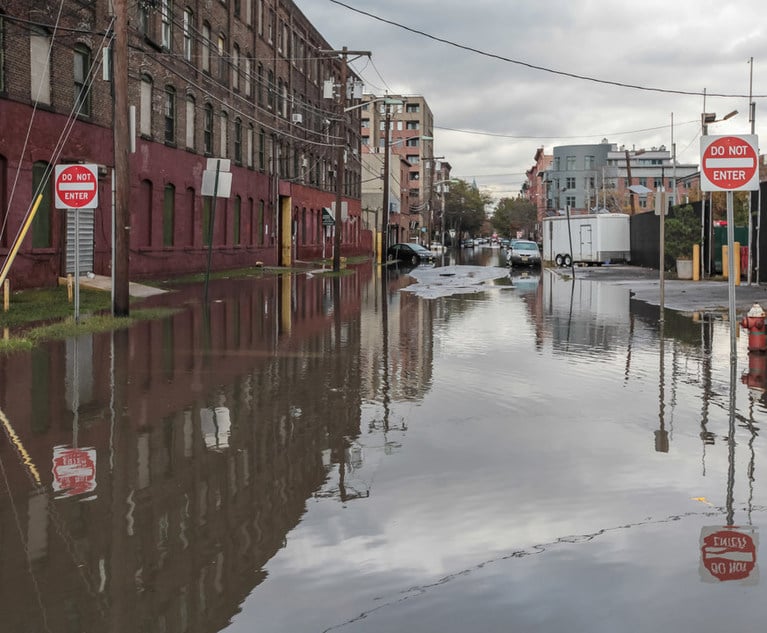
Essential disaster preparedness tips for business owners
 Businesses should conduct regular risk assessments to identify vulnerabilities in their operations, including evaluating structural integrity, electrical systems, and HVAC units, as well as external factors like nearby water bodies that could lead to flooding. (Credit: Sergey/Adobe Stock)
Businesses should conduct regular risk assessments to identify vulnerabilities in their operations, including evaluating structural integrity, electrical systems, and HVAC units, as well as external factors like nearby water bodies that could lead to flooding. (Credit: Sergey/Adobe Stock)
After a severe weather tragedy, which can happen anywhere at any time, the Institute for Business and Home Safety estimates that about 25% of enterprises never reopen. Despite this, most disasters are minor, and their impacts can be minimized by creating and adhering to a thorough disaster preparedness strategy.
Here are some essential preparedness tips to mitigate damage and ensure business continuity during weather-related disasters.
Create a comprehensive disaster preparedness plan
The most crucial step in mitigating these losses is to create a robust disaster preparedness plan (DPP) to handle whatever comes their way by protecting their physical property, intellectual property, and revenue. A DPP is similar to a Disaster Recovery Plan (DRP) or Business Continuity Plan (BCP) but takes extra steps to incorporate comprehensive company inventory and disaster avoidance measures.
Every business should have a DPP unique to its industry, location, and facilities and it should be updated based on emerging risks in your area. To begin, start with the basics:
- Take Inventory: To ensure that you can quickly identify all furniture, electronics, equipment, and other objects in your facilities, prepare a comprehensive business inventory and update it regularly. This will help you file insurance claims down the road should your property become damaged during an unexpected event.
- Don’t Forget Tech: Install secure external hard drives and back up all your important files in case you face unexpected power outages.
- Communicate! Communicate!: Create a communication plan in a disaster to inform managers, staff, and clients. Even something as basic as a traditional phone tree can be pretty helpful in an emergency.
- Check Systems: Inspect all emergency systems, such as sprinklers, smoke detectors, and alarms are functioning at their best in case they need to be used in an unexpected situation
Perform a risk assessment
Businesses should conduct regular risk assessments to identify vulnerabilities in their operations, including evaluating structural integrity, electrical systems, and HVAC units, as well as external factors like nearby water bodies that could lead to flooding.
For insurance professionals, understanding the unique risks faced by each client’s industry and location allows you to offer tailored coverage options that address these potential issues.
Establish a communication protocol
In times of crisis, straightforward and rapid communication is critical. As mentioned before, a disaster preparedness plan must include a communication protocol that designates points of contact, methods of communication and a chain of command to avoid confusion and ensure that employees, and necessary customers are informed about the status of the business.
Implement preventive maintenance
The costliest severe weather events, such as hurricanes and floods, often cause catastrophic damage to poorly maintained properties. Routine inspections and preventive maintenance can significantly reduce a business’s vulnerability to disasters.
From checking roof integrity to ensuring the proper operation of sprinkler systems, these measures can help companies mitigate damage before disaster strikes. It’s crucial to carry out these preventive maintenance tasks to protect property because failing to do so can result in costly damages and could affect potential insurance claims.
Develop an evacuation and shelter plan
An effective disaster plan should clearly outline evacuation routes and safe shelter areas, should there be an unexpected storm such as a tornado.
Businesses must ensure employees know exactly what to do and where to go in case of an emergency. Conduct regular evacuation drills to familiarize staff with procedures and to minimize chaos, such as injuries and potential liabilities.
Prepare for business continuity
Mitigating physical damage is only part of the challenge; ensuring operational continuity is equally important.
Businesses should have a continuity plan that details how operations will resume post-disaster, which could involve identifying alternate work locations, securing backup power through generators and ensuring that vital documents and data are protected.
Focus on employee safety and training
At the core of any emergency plan is employee safety. Training employees in emergency procedures, including fire safety and first aid, is essential to minimize damage risks during an event but also helps businesses avoid potential legal liabilities that may arise from inadequate safety measures.
 Jack White
Jack White
Overall, it should be a top priority for any organization to withstand an emergency or natural disaster while keeping its employees safe and safeguarding its property and intellectual assets. Understanding what a disaster preparation plan (DPP) is and how to implement it may take some time. Still, a well-executed DPP increases the likelihood that a business will survive a disaster.
Jack White is the senior director of technical services at Rainbow Restoration where he works with trainers to develop and refine a training program to suit the needs of their owners. Jack was awarded the prestigious Don Dwyer Award in 1997 and RIA’s Martin L. King award in 2019.



